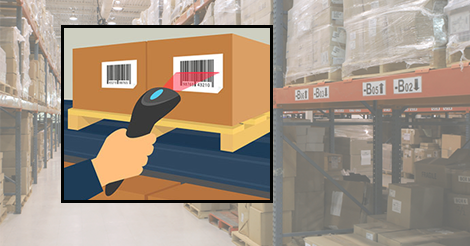As with any major business purchase, when it comes to WMS for your small warehouse it’s important to set a budget based on a realistic understanding of your requirements and what is available in the market. Firstly, you need to determine what WMS functionality you need, and therefore which type of system will be best for your operations. Typically, you have three options and each has a significantly different price tag. The first option is to make do with any existing warehouse management functionality available in your ERP solution. These tools will include basic functionality for picking, packing and shipping, but will have limited options when it comes to managing more complex needs. The second option is to buy a standalone WMS system that you can integrate with your existing ERP software, however, these types of standalone solutions are usually designed for very large and complex warehouses – and have the price tag to reflect this. A better option for small warehouses is to find an ERP solution with advanced WMS capabilities. Something in between basic warehouse management tools and an all-out WMS system. This is where Blue Link works great. Not only do you get robust ERP functionality with built-in warehouse management tools, but you also have the option to turn-on more sophisticated WMS capabilities (such as the ability to set-up multiple stocking locations for the same SKU). For the sake of this post, we are going to take a closer look at option number three, and some of the cost considerations to keep in mind when budgeting for a WMS for your small warehouse.
Software Costs
When you buy ERP with WMS capabilities, you will need to take into account the cost of the ERP plus the cost of the WMS features. Many software vendors base pricing off the number of user licenses and any additional functionality that’s required outside of the basic inventory management and accounting features. This allows your business to pick and choose which advanced features you need – for example, WMS, eCommerce, lot tracking, point of sale and more. The cost to turn on additional features is significantly less than having to purchase a sophisticated standalone WMS software which can cost as much if not more than the cost of your ERP system. And having an all-in-one solution can save you time and money down the road as well. It’s much easier to deal with one software vendor and support team than having to manage and integrate multiple solutions from different vendors.
Other costs associated with implementing WMS functionality include:
Hardware Costs
One of the major benefits of WMS for small warehouses is the inclusion of sophisticated barcode scanning functionality. Part of setting a budget will involve determining how many devices you will need in the warehouse and what sort of accessories or other barcode scanning equipment is necessary. When planning for hardware purchases, keep in mind the following:
- What sort of devices do you want to use and what devices are available?
- How many employees will need to use a device?
- How will you use the devices - will they be mounted on carts or forklifts? Will employees be holding them in their hand?
- Do you have adequate WiFi for the warehouse and are there any dead spots that need equipment?
- How many charging stations or lock cabinets do you need for storing barcode scanners?
- Will you be printing barcode labels for product without them? Will you need to print barcodes for your shelving? If yes, what size will the labels be and do you have an adequate printer to make your own labels?
Consulting Costs
When implementing WMS functionality in your small warehouse, you will want to schedule consulting time with the software vendor to review your current warehouse processes, discuss opportunities and changes, get help setting up your warehouse design and any other pre-go-live activities. The more prepared you are before you start using new software, the easier the transition will be.
Training Costs
Training employees on a new WMS will be a significant cost, especially if your team has never used a WMS system before. However, proper training from the beginning can have one of the biggest impacts on how quickly your team will be productive on the new system. Training will include not only how to use both the ERP software and WMS but also training on certain new job responsibilities such as:
- Who will be responsible for replenishment?
- How frequently? Every morning? Twice per day? Night shift?
- Who will be responsible for cycle-counting shorted locations?
- Do employees know how to perform cycle counts?
- Will you lock up your devices every night?
- If so, who will be responsible for ensuring that every device is accounted for and is plugged in/charging every night?
As you can see, there are a lot of things to take into consideration when setting a budget for a new WMS system. However, once you’ve made some initial decisions and have proper processes in place, you will quickly start to realize the many benefits of advanced WMS for your small warehouse. And this is why finding the right software vendor is so important. You want to work with a company who will take the time to understand your business needs to help identify opportunities for improvements – and work with you and your team to create the most efficient processes.











